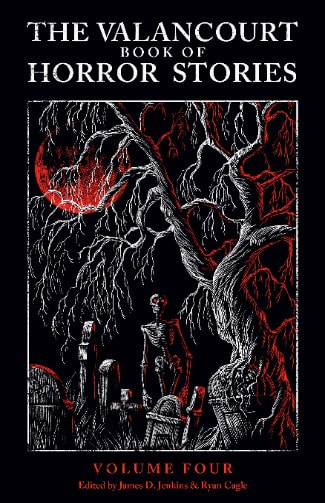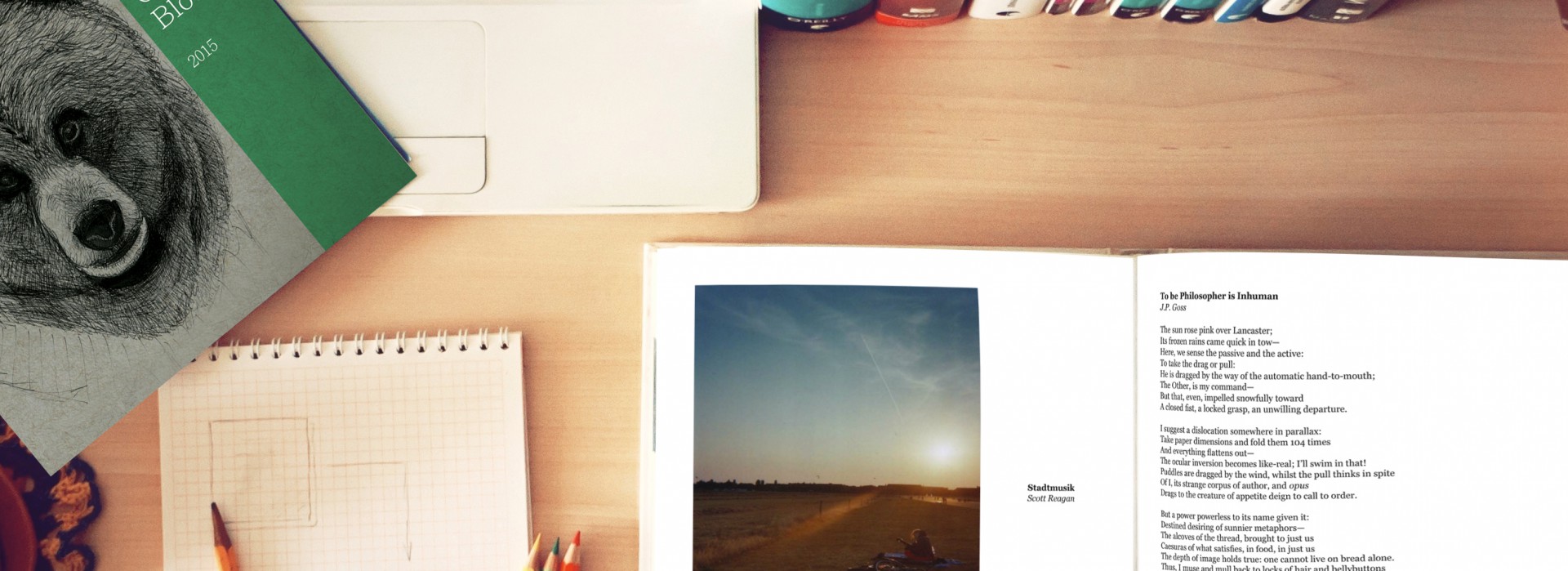reviewed by Abbie Hoffer

When discussing seminal works of horror such as Dracula, Rosemary’s Baby, or The Shining, the word “timeless” is one of the greatest compliments a horror writer can achieve. The hope that one’s work transcends generational lines is not unique to the horror genre, but what truly strikes humanity’s fears shifts constantly due to pop culture, politics, religion, and nearly every other factor of an average life. Valancourt Books is unique in the world of horror, as their catalogue of titles includes both new contemporary horror and out-of-print horror from as far back as the Victorian era. In their series titled The Valancourt Book of Horror Stories, they attempt to weave horror stories from the late 1800s to today into a cohesive and terrifying short story collection. The fourth and most recent volume succeeds in this endeavor.
What is most impressive about older horror works that transcend the time period they were written in is that often the worlds within the stories are not our own. Sprawling stone mansions, oil lamps, and stagecoaches are all foreign objects to a modern reader. Yet, some of these works published as far as two centuries ago still inspire fear because the root of that fear is still baked into the human experience. No matter what the house in the story looks like, we fear being alone in an unfamiliar place, monsters still hide in dark corners, and modern people are still susceptible to ghost stories.
“The Gentleman from America” was published in 1924 and still manages to terrify with a surprising twist on the genre of the ghost story. Most of the piece concerns an American man tricked by his two British friends into spending the night in a supposedly haunted house, which backfires when the tricks they play on him cause him to lose his mind. The two Brits are faced with the consequences of their actions when they later learn their practical joke turned their friend into a deranged lunatic who bade his time waiting for revenge. Other older stories in the collection depict a yearly pilgrimage of death, a governess accused of a ghastly crime, and a Gift of the Magi-style reversal having to do with a gifted medical skeleton. The collection does not fit a singular subgenre of horror like other Valancourt collections, but the stories all fit together because they exemplify fears that persist in the human psyche. Being left alone with ghosts, going to prison, and learning of a murderer in one’s social group are all subjects that persist in modern horror, proving tropes that have existed for centuries still have the potential to scare audiences.
The roots of most popular fears may have remained the same for centuries, but the advent of new technology and changes made by modern society has opened new avenues for authors to scare modern readers. Such is the case in two of the newest stories packaged in the collection from authors Elizabeth Engstrom and John Peyton Cooke, two authors familiar to Valancourt readers. Engstrom’s horror short stories have been packaged in Nightmare Flower, a volume in Valancourt’s successful Monster, She Wrote series highlighting women in horror and science fiction, and Cooke’s Vampire novel Out for Blood was recently republished by Valancourt after going out of print. Both utilize more modern systems and inventions to update a few common tropes.
Cooke’s “Let’s Make a Face” takes place in a dystopian future where everything from one’s occupation to the type of food one has access to is determined by how attractive they are. This is determined by how attractive their parents are, and the only way to move up in the world is to subject oneself to the mercy of a reality show audience who can decide if a contestant “will be elevated to a nine or ten or become the latest popular attraction in Dr. Bob’s freak show.” Such is the case with Helen, who pleads with the audience and the judges, spends weeks convalescing from surgery, and does her very best not to complain or be difficult only for the bandages to come off and reveal her new freakish body. The body horror in the reveal scene is excellently horrific, and the idea of throwing oneself at the mercy of a panel or jury is another long-standing horror trope in the vein of “The Lottery” given new life by utilizing the more modern inventions of the reality television show and increasingly unrealistic beauty standards.
In Engstrom’s piece “Vivid Dreams,” an old woman faces off against the near-universal fear of growing old and living in constant pain. Constance, an elderly woman at a nursing home, is given a new sleeping pill that allows her to act as an angel of mercy and kill the more miserable residents of the home within their dreams with the help of a young girl. When she awakes and finds her roommate is dead and can no longer rely on the girl from her dreams to help her with her own death, she is left alone, in pain, and crying “who will take care of me?” The fear of death is one of the oldest in humanity, but the despair and loneliness of senior living facilities is a recent invention used to great effect here to convey a more existential scare.
What makes this blend of stories work so well together is that no one fear is made superior. Humans are a species made of fear, and Valancourt has collected a handful of stories that address some of the biggest fears humanity has and arranged them masterfully so that the audience never reads about the same fear twice in a row. The decision to focus on breadth rather than depth of fear makes this series unique from many other mainstream horror collections, which normally focus on a singular author or subject matter. It is a truly innovative way of presenting fear to a modern audience.
Abbie Hoffer is a student at Lebanon Valley College, where she studies English and creative writing. In her free time, she enjoys playing tennis, watching horror movies, crocheting, and tending to her many potted plants. Her work has previously appeared in Unstamatic.


